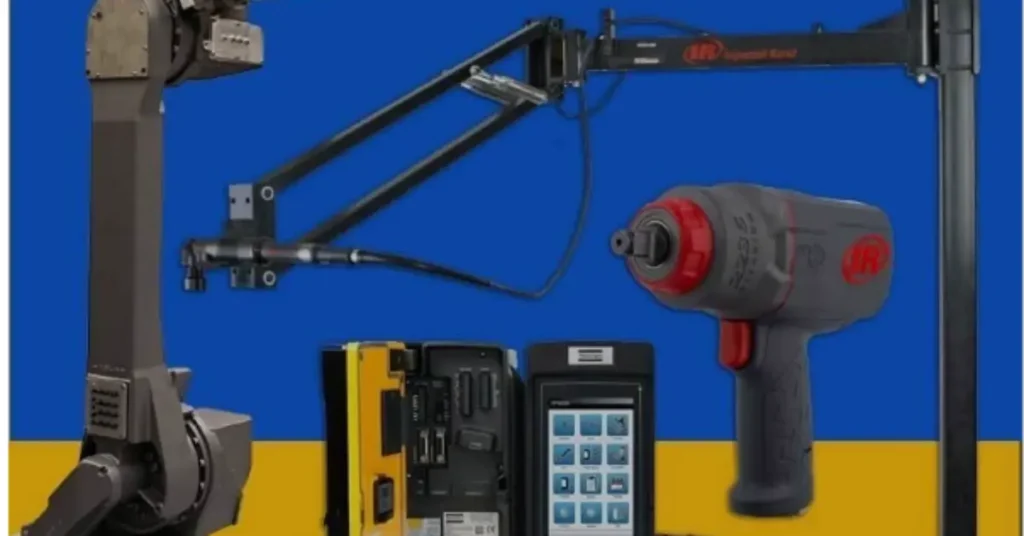Ask any manufacturer about critical assembly challenges, and proper torque control tops the list. However, with the array of manual and electric torque screwdriver options available, selecting the best tightening tools significantly impacts quality, throughput, and overhead. Understanding the core capabilities between manual and automated solutions clarifies the better choice for many applications.
This guide examines key electric torque screwdriver benefits versus traditional manual torque tools, including:
- Enhanced precision and consistency
- Faster tightening speed
- Reduced operator effort
- Advanced data logging and analytics
While manual torque screwdrivers provide adequate functionality for light duties, electric variants automate repetitive tasks for vast efficiency gains. Let’s compare how automated electric torque controllers outperform manual tightening across critical metrics.
Improved Torque Precision and Consistency
Achieving consistently accurate torque juggles many factors operators struggle with using basic manual tools. Visually confirming proper values on clicking analog dials challenges even experienced technicians checking hundreds of fasteners daily. Alarming studies indicate manual tightening only yields precise in-spec torque around 30% of the time.
Conversely, smart electric torque controllers deliver reliable precision within ±1% continuously through software calibrated accuracy and precision automatic shut-off. Advanced strain gauge sensors combined with programmable electric motors apply ideal torque every time without overshoot. Even the most skilled manual technician cannot match that consistency through hand-tightening fatigue over long shifts.
Electric torque tools also eliminate variability between operators through automated performance not reliant on individual skill. Software-controlled electric screwdrivers nimbly handle different fastener sizes, angles and applications consistently. Superior precision minimizes scrap waste from leaks, cracks or functionality issues from improper tightening torque historically plaguing manufacturers.
Faster Tightening Speed
In addition to enhanced consistency, automated electric torque controllers tighten threaded fasteners exponentially quicker than manual techniques. Electric motors programmed to your exact torque, depth, and angle parameters rapidly assemble components in under a second without over torquing. Multi-spindle electric screwdrivers simultaneously driving 4, 6 or 8 bits achieve incredible productivity gains.
Conversely, manual tightening depends on technicians carefully winding each fastener down watching a dial indicator for the target torque value. Achieving proper torque for multiple fasteners manually consumes substantially more effort and time. Production bottlenecks frequently develop from slower paced human tightening of thousands of fasteners daily.
Reduced Operator Effort and Fatigue
Twisting resistance building against their fingers and hand muscles inevitably tires workers manually torquing numerous fasteners daily. Technicians often rush once energy flags straining against harder to turn assemblies. Even veteran operators struggle maintaining peak accuracy after hundreds of manual repetitions.
Powerful electric motors in automated torque screwdrivers handle all the tightening effort electronically. Technicians simply place the fastener bit, then the controller handles turning screws to programmed spec. Relieving physical strain keeps personnel fresh, alert and less prone to avoiding difficult assemblies that require more force to manually torque correctly.
Advanced Data Logging and Analytics
While manual click-type torque screwdrivers provide operator feedback on torque applied, that mental picture vanishes instantly lacking data history. No record confirms who tightened what, to what actual torque level and when across thousands of parts. At best, sporadic auditing by external torque testers provides minimal insights into the total process.
Every electric torque controller contains sophisticated data logging tracking torque and angle curve signatures for each individual fastener. Digital torque logs document exactly when assemblies were produced, by which station, at what torque reading. Cloud-based analysis compares live data versus historically acceptable patterns to isolate process shifts.
Uploaded datasets enable historical analytics and trending difficult for basic manual tools. Data verification validates proper torque while reinforcing quality standards for advanced Industry 4.0 smart factory environments.
Why Choose Flexible Assembly for Your Torque Needs
While most torque tool providers focus solely on equipment sales, Flexible Assembly delivers turnkey accuracy through tailored optimization services surrounding electric Torque screwdrivers. Leveraging over 20 years solely focused improving precision torque controlled assembly, we help manufacturers realize the full potential of automated electric tools through:
- Documenting your exact torque requirements
- Prototyping process flows
- Custom electric tool specification
- Precision validation checks
- Testing coverage at every control point
- Cloud dashboard analytics
- Ongoing operator training reinforcement
- Field data support identifying process adjustments
Our expertise seamlessly integrates electric torque controllers with supplementary error proofing and traceability solutions for maximized quality, speed and control. Contact Flexible Assembly to discuss where upgrading from manual to automated torque instrumentation can resolve bottlenecks while improving reliability.
